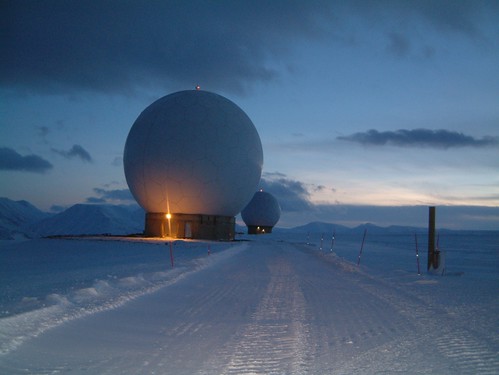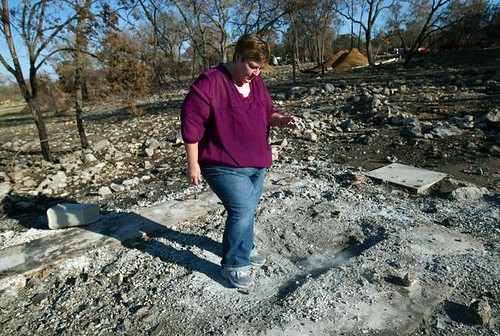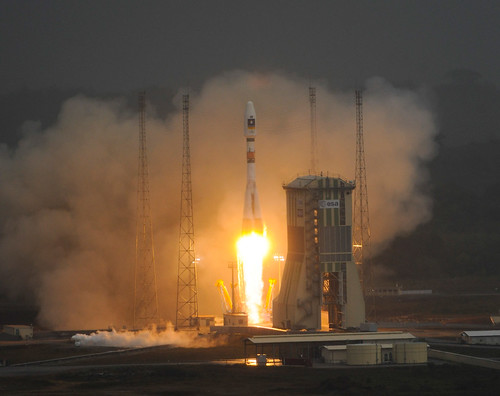WBMSAT Satellite Industry News Bits 10/28/2011
Friday, October 28th, 2011Making what could be its final flight, Delta II rocket deploys new weather and environmental research satellite for NASA and NOAA.
[NASA Space Flight – 10/28/2011]
China will launch Long March-2F/H rocket early next month, carrying unmanned spacecraft Shenzhou-8 which will conduct the country’s first space docking with Tiiangong-1, or Heavenly Palace-1, a space lab module.
[Space Daily – 10/28/2011]
Secure World Foundation to discuss evolution in China’s role in space, as the country has developed and deployed space-based intelligence, surveillance, and reconnaissance capabilities to support military and national security and enhance their regional power.
[SatNews – 10/28/2011]
Miami-based NewCom International donates year’s worth of Internet connectivity to aid Germany-based NGO Welthungerhlife’s humanitarian work in Liberian refugee camps.
[PR Web – 10/28/2011]
Coalition to Save Our GPS challenges LightSquared’s forecasts that FCC will be able to resolve controversy over company’s planned LTE network, using conference call to slam LightSquared’s business plan and technical claims.
[PC World – 10/28/2011]
Mitec Telecom employees plan to buy all its VSAT satellite communications division.
[Montreal Gazette – 10/28/2011]
Marine Data Solutions of Cape Town begins implementing Automatic Identification System coastal network at lighthouses along South African coast.
[SatNews – 10/28/2011]
LightSquared enters into collaborative partnership with antenna solutions provider PCTEL to develop technology to resolve concerns regarding interference with GPS.
[PR Newswire – 10/27/2011]
Astrium hands over Arabsat-5C to ARABSAT after successful completion of in-orbit testing.
[SatNews – 10/27/2011]
Suspected Chinese hackers interfered with Landsat-7 and Terra AM-1 satellites in 2007 and 2008 according to Bloomberg Businessweek story citing upcoming congressional commission report.
[Computer World – 10/27/2011]
Arianespace’s full launcher family in place as flight-ready versions of Ariane 5, Soyuz, and Vega are together at the Spaceport for the first time.
[SatNews – 10/27/2011]
TV and radio stations, and satellite, cable, and wireline video systems required to participate in first national test of Emergency Alert System Wednesday, November 9.
[Examiner – 10/27/2011]
TeleCommunications Systems’ Commercial Mobile Alert System receives FEMA certification as emergency alert system for delivery to mobile phones.
[SatNews – 10/27/2011]
Canadian government plans to invest as much as $477M in U.S.-led Wideband Global Satellite system.
Vancouver Sun – 10/27/2011]
Newtec hosted free webinars December 14 and 15 to explore expected growth in government demand for satellite bandwidth for data, video, and voice communication.
[SatNews – 10/27/2011]
RRsat launches second DVB-S2 platform on MEASAT-3a.
[PR Newswire – 10/27/2011]
Vizada and Mexican service provider MultiSAT deliver satcom services and solutions for Mexican mining industry.
[Marketwatch – 10/27/2011]
Astrium Services launches portal to provide satellite imagery of forests in Congo Basin to organizations working to conserve the regions forests.
[Satellite Evolution – 10/27/2011]
Fourteen months after launch, the Air Force’s first Advance Extremely High Frequency military communications satellite is finally on station following arduous maneuvers precipitated by premature engine shutdown.
[Florida Today – 10/26/2011]
After disappointing results in marketing to U.S. Government’s National GeoSpatial Intelligence Agency, EADS Astrium shifts attention to Asia where demand for EO satellites and imagery is growing across the board.
[NSR Report – 10/26/2011]
Intelsat partners with du of United Arab Emirates to jointly offer MCPC television program distribution solutions on Intelsat 10.
[Market Watch – 10/26/2011]
DigitalGlobe and NTT GEOSPACE launch new online geospatial intelligence service powered by DigitalGlobe featuring on-demand access to imagery of Japanese landmass.
[SatNews – 10/26/2011]
Iridium announces complete suite of AxcessPoint products and services that allow laptop connected to Iridium phone to become wireless hotspot connecting smart phones, laptops and other devices to the Internet over the Iridium network.
[TMCnet – 10/26/2011]
Stratos Government Services is awarded five-year Indefinite Delivery Indefinite Quantity contract by United States Coast Guard to provide large cutter connectivity.
[SatNews – 10/26/2011]
Spirent positioning & navigation test solution now supports China’s Compass/Beidou-2 satellite navigation system.
[Market Watch – 10/26/2011]
SES Astra 1N enters commercial service over Europe.
[Satellite Today – 10/25/2011]
United Arab Emirates reopens negotiations with France for a military surveillance satellite.
[UPI – 10/25/2011]
UK regulator Ofcom writes to International Telecommunications Union asking it to rescind the satellite spectrum granted to ICO Satellite after its failure for 32 months to establish viable business using the spectrum.
[The Register – 10/25/2011]
U.S. space entrepreneur warns that China could own the moon by 2026.
[SatNews – 10/25/2011]
UltiSat Europe gets sole-source contract from Danish National Procurement agency allowing Danish federal and local government agencies to buy satellite services more easily.
[Market Watch – 10/25/2011]
NSSLGlobal opens up new spot beam for maritime use in southeast Asia on SES’ NSS6 satellite.
[SatNews – 10/25/2011]
Spacenet selected to provide upgraded network performance capabilities at Cumberland Farms’ 600-plus convenience and gasoline retail stores in 11 states.
[TMCnet – 10/25/2011]
Hughes Network Systems provisions GTECH Columbia with advance HN satellite networking solution, connecting more than 1,100 lottery sites in Colombia.
[SatNews – 10/25/2011]
ARINC successfully launches GLOBALink/Iridium Data Link communications service for Asiana Airlines of South Korea.
[SatNews – 10/25/2011]
U.S. Strategic Command commander Gen. Kehler warns satellite industry service providers that rising amount of data collected by U.S. satellites is starting to exceed Pentagon’s ability to process it.
[Satellite Today – 10/24/2011]
EUTELSAT announces full entry into commercial service of its high capacity ATLANTIC BIRD 7 satellite, with enhance footprint providing coverage in North Africa and Gulf states.
[SatNews – 10/24/2011]
AsiaSat 7, built for AsiaSat by Space Systems/Loral, arrives at Baikonur Space Center.
[SatNews – 10/24/2011]
Polar satellite project under consideration by Canadian government might be required to fix inability of F-35 Joint Strike fighter plane to communicate in Canadian North.
[CTV News – 10/24/2011]
Harris receives $20M in orders to provide manpack radios to U.S. Army and Marine Corps that include ability to upgrade to Mobile User Objective Systems satellite communications.
[Market Watch – 10/24/2011]
Globecomm Systems sees growth in satellite communications in the areas of Media, Wireless, Government, Enterprise, and Maritime, with increasing trend toward use of multiple devices.
[Satellite Spotlight – 10/24/2011]
Recently published standard ETSI TC SES specification TS 102 856 Parts 1 and 2 describes how to support transport of Multi-Protocol Label Switching data and signalling flows over a Broadband Satellite Multimedia network.
[SatNews – 10/24/2011]
European Space Agency’s Galileo constellation will use Passive Hydrogen Maser atomic clock stable to 1 second every 3 million years, developed by SELEX Galileo, an Finmeccanica company.
[SatNews – 10/24/2011]
German satellite ROSAT re-entered atmosphere over Bay of Bengal.
[Space Daily – 10/23/2011]
Since Craig Cooning took over Boeing’s struggling space and intelligence systems in 2008 it has doubled its backlog from five years ago.
[LA Times – 10/23/2011]
WBMSAT satellite communications systems consulting services











